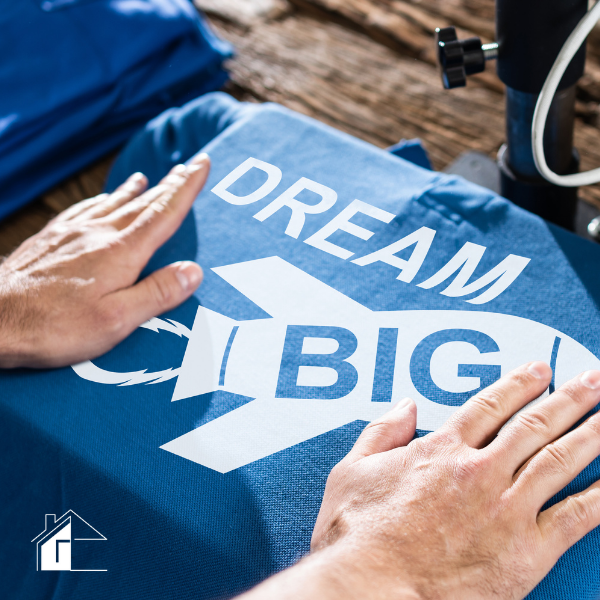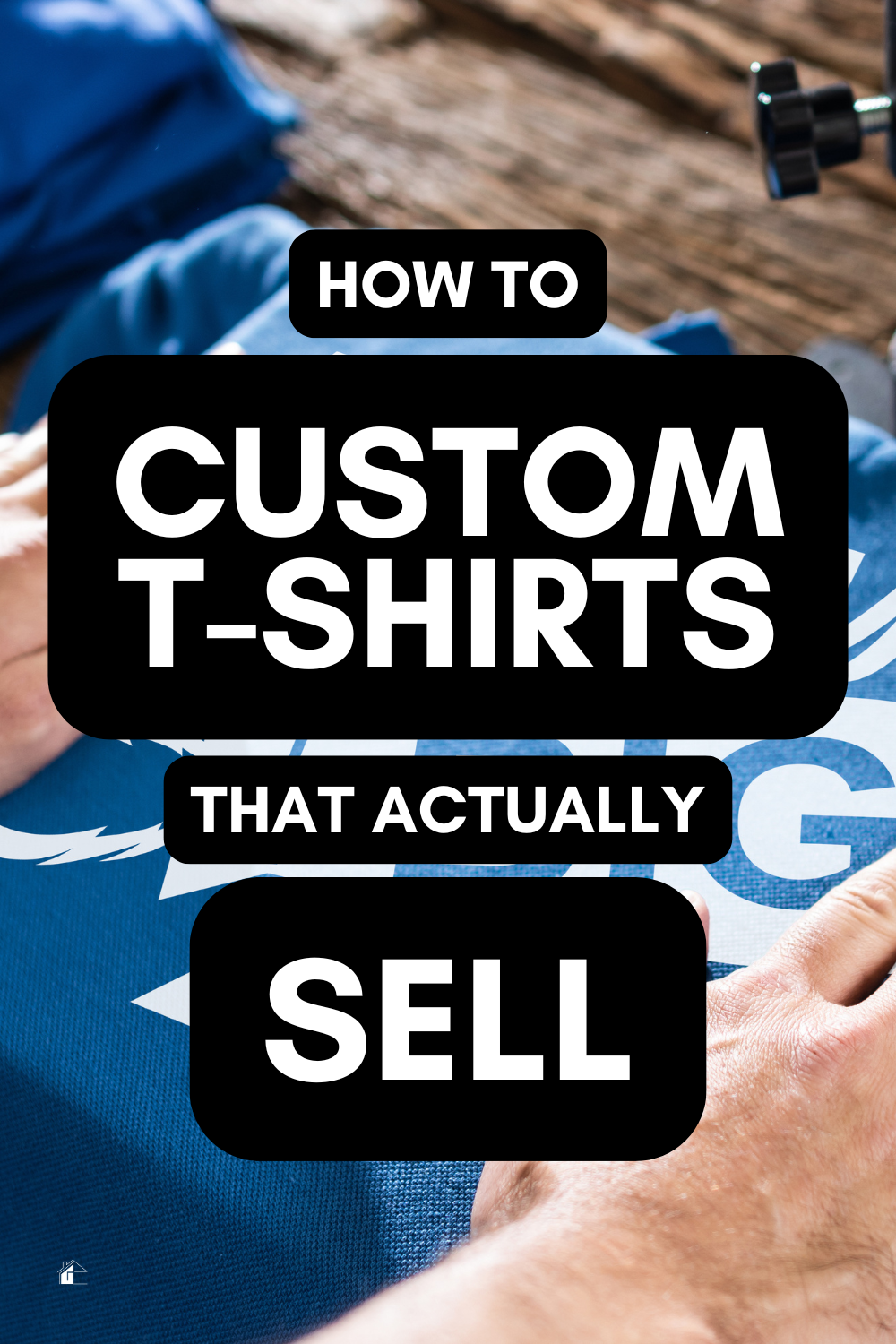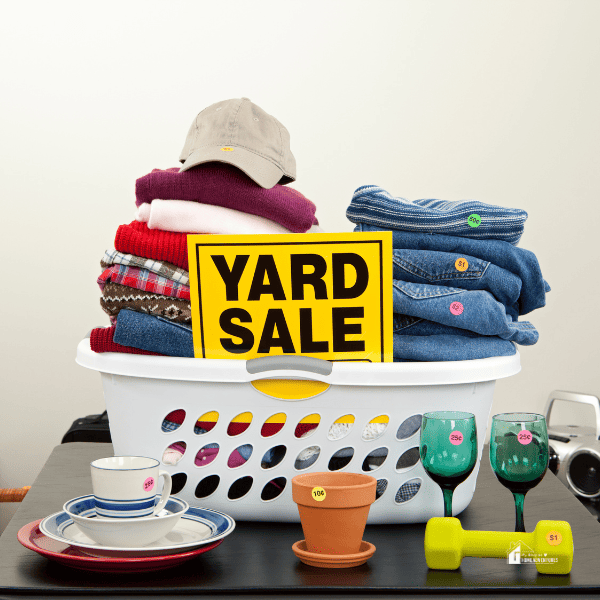How to Create Custom T-Shirts That Actually Sell
This post may contain affiliate links which might earn us money. Please read my Disclosure and Privacy policies hereCreating and selling custom T-shirts is one of the most practical ways to turn creativity into income. It’s flexible, affordable to start, and can easily fit into a stay-at-home lifestyle. Whether you’re a parent looking for a side hustle or someone who enjoys DIY projects, the custom T-shirt business offers endless possibilities.
But while designing a shirt might be simple, making one that people actually buy takes a little more thought. Success depends on knowing your audience, making quality designs, and using the right printing methods. With the right steps, anyone can build a small business that earns steady income without leaving home.

Find Your Niche Before You Design
Before you start designing, you need to know who you’re designing for. The most successful T-shirt businesses don’t sell to everyone—they focus on a specific niche. A niche helps your shirts stand out in a crowded market and makes your designs more personal and relatable.
Think about what communities or interests you understand best. Parents, pet lovers, hobbyists, and small-town locals are all strong audiences. You can design shirts around family humor, motivational quotes, or even simple lifestyle themes like gardening or coffee.
Spend a little time researching what’s trending on Etsy or Pinterest. Look for ideas that have steady interest, not just short-term fads. When you know your audience, your designs naturally become more meaningful and easier to sell.
Design Shirts That People Actually Want
A great design is clean, easy to read, and emotionally appealing. The best-selling shirts aren’t always the most complicated. Simple words, bold fonts, and balanced colors often do the trick.
Focus on designs that connect with people’s daily lives or express something they feel. If your audience is parents, a funny quote about family life might work. If you’re targeting pet owners, go for designs that show pride and affection.
Use design tools like Canva or Adobe Express to bring your ideas to life. Both are beginner-friendly and help you experiment with layouts and colors. Show your drafts to friends or post a few mockups on social media to get feedback.
When it comes time to print, consider using the DTF transfer method. This method lets you print full-color designs with precision and apply them to almost any fabric. The result is a durable, flexible print that looks professional without needing large-scale equipment. It’s a great option for home-based sellers who want quality without high overhead costs.
Choose the Right Printing Method
Different printing methods offer different benefits, and choosing the right one depends on your goals and budget.
- Heat transfer: Great for beginners. You can use a regular heat press to apply printed designs onto shirts.
- Screen printing: Works best for large batches with simple designs. It creates bold, long-lasting colors but takes more setup time.
- DTF printing: Offers detailed, full-color prints and works on various materials. It’s ideal for small business owners or anyone selling limited designs.
- Print-on-demand: Lets you design shirts while a third-party company handles printing and shipping. It’s convenient but offers less control over quality.
Whichever method you choose, focus on consistency. People remember shirts that feel good to wear and hold up after several washes. High-quality printing helps turn first-time buyers into repeat customers.
Keep It Budget-Friendly
Starting small is the best approach. You don’t need to buy expensive machines right away. Begin with the basics, a printer, heat press, blank shirts, and design software. As your sales grow, you can reinvest your earnings into better equipment.
Buy materials in bulk when possible. Plain cotton T-shirts are inexpensive and versatile. Local craft stores and online suppliers often offer discounts for bulk orders. Keep your costs low without cutting corners on quality.
If you’re not ready to print at home, try partnering with a local print shop or using print-on-demand services. These options let you sell shirts without having to store inventory or manage shipping.
Take Great Photos and Write Better Product Descriptions
Good photography can make or break your online listings. People want to see how the shirt looks when worn, not just folded on a table. Use natural light and neutral backgrounds. If possible, show your shirts on real people in casual settings.
When writing product descriptions, focus on comfort, design meaning, and fit. Instead of just saying “soft cotton shirt,” describe what makes it special. For example, “a lightweight tee designed for everyday wear that celebrates family life with a bit of humor.”
Include sizing details, washing instructions, and material type. Clear, honest information builds trust and reduces returns.
Choose Where and How to Sell
You don’t need a storefront to make sales. Online platforms make it easy to reach buyers without heavy costs. Etsy is perfect for handmade and personalized designs, while Shopify or Facebook Marketplace are great for small business owners who want control over branding.
Social media plays a big role in promoting your work. Create a simple page for your brand, post new designs regularly, and share photos of your printing process. Encourage satisfied buyers to tag your shirts in their posts. Word-of-mouth marketing works wonders for home-based brands.
For local exposure, bring your shirts to craft fairs or community events. You’ll meet new customers face-to-face and get direct feedback on your designs.
Build a Brand, Not Just a Product
Anyone can sell a shirt, but building a recognizable brand helps you stand out. A brand creates loyalty and tells a story about who you are. Choose a simple name, design a clean logo, and use consistent colors across your website and packaging.
Think about your message. Are your shirts meant to inspire, entertain, or bring families together? Keeping that message consistent helps people remember you.
Follow up with buyers through thank-you notes or short emails. Small gestures create strong customer relationships and encourage repeat sales.
Final Tips for Long-Term Success
The T-shirt business rewards patience and consistency. Keep experimenting with designs, test different fabrics, and pay attention to what sells best. Not every idea will be a hit, and that’s okay. Learning what your audience loves is part of the process.
Be willing to adapt. Design trends shift, but quality and good customer service never go out of style. Treat every shirt you sell as a reflection of your creativity and care.
With a bit of effort and smart planning, creating custom T-shirts can become more than a hobby—it can be a steady, rewarding source of income right from home.







